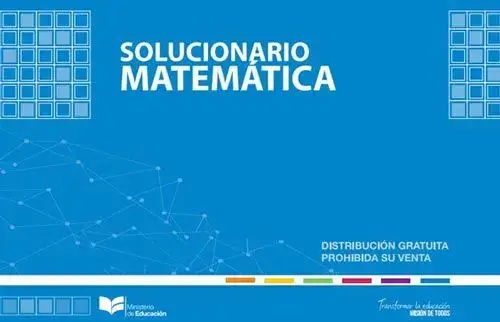Canadian athletes look for positives in Tokyo Olympics postponement
Lying on the pitch with a ruptured right Achilles tendon, Mark Pearson feared he wouldn’t be able to represent Canada at the Tokyo Olympics.
The veteran midfielder was injured six minutes into the men’s field hockey gold-medal game at the Pan Am Games in Peru last August, an eventual 5-2 loss to Argentina that left Pearson and his teammates with one path to qualify for the Games originally scheduled for this July.
But the IOC’s decision to postpone the Olympics — with new dates of July 23-Aug. 8 2021 announced Monday morning — offers an opportunity for Pearson and other Canadian athletes who found themselves in a similar predicament.
«I planted my right leg and tried to turn at the same time and felt (the Achilles) go. Honestly, I feared my career was over,» said Vancouver’s Pearson, who at 32 was eyeing a third tour of duty after competing at the 2008 and 2016 Olympics. «There was no guarantee we were going to win the back door qualifying game (against Ireland). It was probably, at best, a 50-50 chance.»
But on Oct. 27, Adam Froese clinched an Olympic spot for Canada as the seventh shooter in sudden-death shots while Pearson, staring at months of rehab following surgery, cheered from the sidelines in West Vancouver.
WATCH | Canadian athletes on Tokyo 2020 postponement:
«I would have said I had probably an 85, 90 per cent chance of being back healthy and feeling 100 per cent in time for the Games (in late July),» Pearson says, «but there was a bit of an unknown because I didn’t know how (the heel) was going to hold up (once I began full training).
«I’m still only at the jogging phase. My trajectory was to run in April, sprint in May and in June be back training.»
Pearson was about six weeks into his running and jogging rehab on an underwater treadmill under the guidance of Dr. Wilbour Kelsick in Port Moody, B.C., before local facilities were closed because of the virus.
Getting creative with home workouts
«That’s how I was pushing myself running-wise,» said Pearson, who sits on the Canadian Olympic Committee’s athletes commission. «I’m trying to be as creative as possible (at home) with balance and resistance band exercises along with heel lifts to regain leg strength.»
Pearson, who has reduced workouts to 60 to 90 minutes per day from two hours since the postponement, also spends 10-15 minutes a day climbing 10 stairs in front of his house to build strength in his right calf muscle.
During surgery, Pearson also had a Haglund’s deformity, or bony enlargement on the back of his right heel, repaired after dealing with a heel spur for five or six years.
«I’ve got a couple of screws in the bottom of my heel that pin the Achilles in place and they’ll stay in forever,» said Pearson, who has 274 caps since joining the senior national team in 2005. «It’s about rebuilding the right calf, getting the muscles back and firing. I’m not a shoo-in for the team and need to prove I’m healthy.
«I’m just happy I have a second chance to get back on the field one more time with the Canadian team because I didn’t want that injury to be the way my career ended.»
Melissa Bishop-Nriagu
The 31-year-old middle-distance runner from Eganville, Ont., said she plans to run the women’s 800 metres next year in Tokyo despite cutting short her 2019 season because of a small Achilles tear.
I feel more like myself again. During indoors, I was back at times in practice that I was pre-pregnancy.— Middle-distance runner Melissa Bishop Nriagu on her recovery from a small Achilles tear
Bishop, who finished fourth at the 2016 Olympics in Rio, was fewer than two seconds shy of the Tokyo standard of one minute 59.50 seconds in 2019 with a season-best 2:01.10, and had shown well indoors this spring with a top run of 2:00.98.
In July 2017, Bishop clocked 1:57.01 before sitting out the 2018 campaign to give birth to daughter Corinne. The changing structure of her body upon her return a year ago, she notes, led to several injuries, including a hamstring issue.
«Last year was a tough year coming back. I was extremely fit but my physical body couldn’t hold up with the demand I needed to put on it,» Bishop-Nriagu said. «If COVID-19 wasn’t present, then I truly believe I would’ve been ready for Tokyo (this July). But given what we’re in right now, another year can only help me.
«I feel more like myself again. During indoors, I was back to times in practice that I was pre-pregnancy. The fitness and strength is really coming together.»
WATCH | Melissa Bishop-Nriagu reflects on Olympic experience in Rio:
Antoine Bouchard
Like Bishop-Nriagu, the Canadian judoka hasn’t secured an Olympic spot after working his way back from arthroscopic surgery in July 2019 to repair the labrum and rotator cuff in his left shoulder.
«I was told the recovery could range from six to nine months,» said Bouchard, who dislocated the same shoulder in a late 2017 match. «My left shoulder is not as strong as my right and I probably could have used an extra month to do more strengthening.»

The 25-year-old returned to full-time training on the mat at the beginning of January and fought at Grand Slam tournaments in Paris and Germany in February, but is in a tough battle for the one and only available spot in the men’s 73-kilogram division. Bouchard ranks 30th in the world, 21 spots lower than fellow Montreal resident Arthur Margelidon.
As Bouchard waits for Olympic qualifying events to be rescheduled, the two-time Pan Am champion is hopeful for a chance to reach the podium in Tokyo after placing fifth at the 2016 Games in Rio.
«Qualifying for Rio in itself was an achievement, but that feeling of getting close to (winning a medal) that almost nobody expected has motivated me to train harder,» he said.
Ellie Black
The two-time Olympian is back competing on vault, uneven bars, floor exercise and balance beam, a move the 24-year-old gymnast from Halifax wasn’t prepared to make until she was fully recovered from right ankle surgery.
«My recovery’s been real good,» said Black, who suffered ligament damage on a landing in vault last October at the world championships in Stuttgart, Germany. «That first competition on all four events (in late February) went well and was a confidence boost to get through some easier routines with less (than ideal) preparation.»
WATCH | Ellie Black suffers ligament damage in ankle at worlds:
Two months before the injury, Black won five medals at the Pan Am Games in Peru and was the first woman in the event’s history to win back-to-back gold medals in the individual all-around.
«I was working through a floor routine and was looking at Pan Ams as a test trial for the world championships,» she said. «My body was feeling good and I still felt good at worlds and was very consistent.»
While Canada’s women’s team has already qualified for Tokyo, Black will still have to earn a spot on the squad.
Other Canadians working through injuries:
Bianca Andreescu — The tennis star from Mississauga, Ont., who has reached a Canadian record No. 4 in the world rankings, hasn’t played a competitive match since injuring her left knee in late October at the WTA Finals in China. Tokyo would be the 19-year-old’s Olympic debut.
WATCH | Bianca Andreescu exits WTA Finals with knee injury:
Diana Matheson/Erin McLeod — Veteran teammates with the national women’s soccer team, they missed last year’s World Cup with injuries. Midfielder Matheson rejoined the club in February after a one-year injury absence following toe surgery while goalkeeper McLeod has recovered after dealing with foot pain due to plantar fasciitis.
Matheson, 35, is expected to be a player this season for Utah Royals FC of the National Women’s Soccer League while the 37-year-old McLeod is preparing for her debut with the NWSL’s Orlando Pride.
Dayna Pidhoresky/Kinsey Middleton — The two distance runners withdrew days before the cancellation of the New York City Half Marathon, scheduled for March 15.
Pidhoresky, who automatically qualified for her first Olympics as the top Canadian women’s finisher at the Toronto Waterfront Marathon in October, is waiting to see how her right soleus tendon, which is inflamed where it attaches to the tibia, or shin bone, responds to medication. Husband and coach Josh Seifarth tweeted out a progress report on the weekend.
Look out world, <a href=»https://twitter.com/DaynaPidhoresky?ref_src=twsrc%5Etfw»>@DaynaPidhoresky</a> rocked a brick workout today… 1h15 bike (w/ a new FTP set) into 6 km run. That whole swimming thing though…
—@josh_seifarth
Middleton, a native of Coeur d’Alene, Idaho who holds dual citizenship as her mother was born in Guelph, Ont., experienced tendinitis in one of her shins during a hill workout in early March. The 27-year-old has yet to qualify for Tokyo in either the 10,000 metres or marathon.






